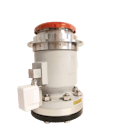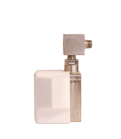Training for Aviation Fuel Hydrant Operators
A safe and efficient aircraft fueling operation in airports requires a leak detection system that’s reliable and easy-to-use for fuel hydrant operators. At Atmos International, company officials are dedicated to ensuring its customers understand how to use its Atmos Portable Tightness Monitor (APTM), which is why the company has launched new material within the online training portal.
The online training portal is broken down into manageable sections including videos for pre-inspection, assembly and installation, software operation, testing procedure and removal procedure. Each section is accompanied by a PowerPoint presentation and ends with a short exam to demonstrate understanding. The operator will then be certified to carry out the tests safely to the required standards.
Understand Portable Tightness Monitoring
The training offers an in-depth overview into the operation of the APTM, so that hydrant operators can use it with confidence. Sufficient training is an important part of Atmos International's service and is put together by its team of in-house aviation engineering experts.
Freddy Mott, global field engineer for Atmos said, “The portal and new training material is a valuable resource to our customers, as they can educate new hydrant operators or carry out refresher training whenever they need to.”
The training material provides our customers with the following benefits:
- An introduction to the APTM prior to use
- Confidence using the APTM on site
- Full understanding of the correct steps and processes for safe operation of the monitor
- Refresher training access
- Support from experienced Atmos Aviation engineers if further training is required
Dean Golba, head of aviation at Atmos International said, “Providing the technology is just one part of our portable tightness monitoring solution. We make sure that our customers fully understand how to use the APTM system so that they can be self-sufficient and effective in detecting leaks. This also contributes towards safety when out in the field by ensuring that hydrant operators understand the correct processes for carrying out a test.”



